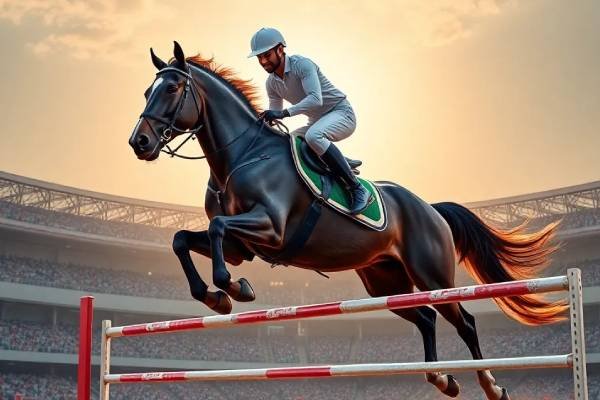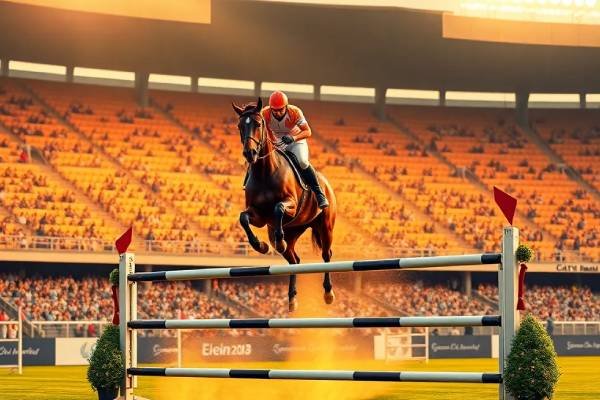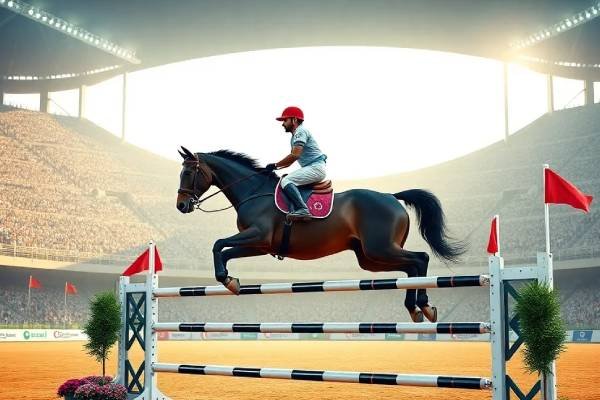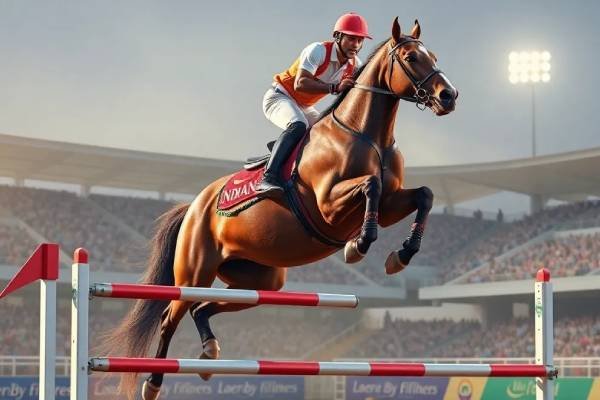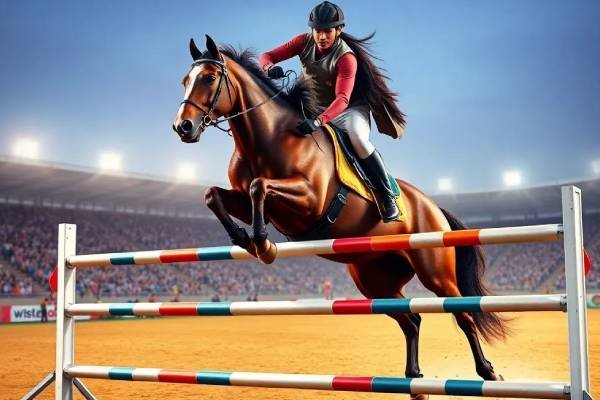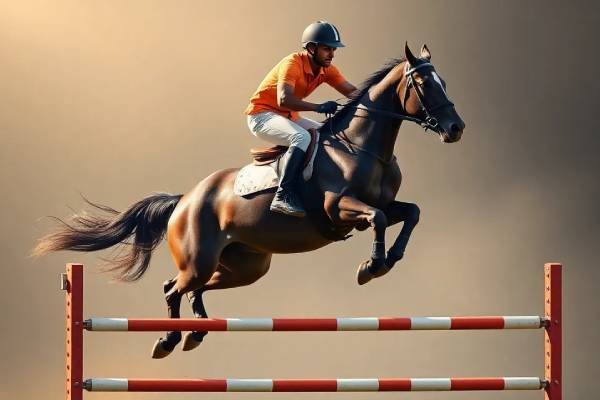Equestrian Jumping, a thrilling discipline in English riding, showcases the agility, precision, and teamwork of a horse and rider navigating a jump-filled course. Each jump requires skillful coordination as they overcome obstacles of varying heights and widths, testing the horse’s athleticism and the rider’s control. This exciting sport is a highlight at equestrian events worldwide, demanding the perfect blend of speed, accuracy, and mutual trust. Equestrian Jumping is also featured on the prestigious Olympic stage, drawing audiences captivated by the power and grace of horse and rider duos mastering challenging courses.
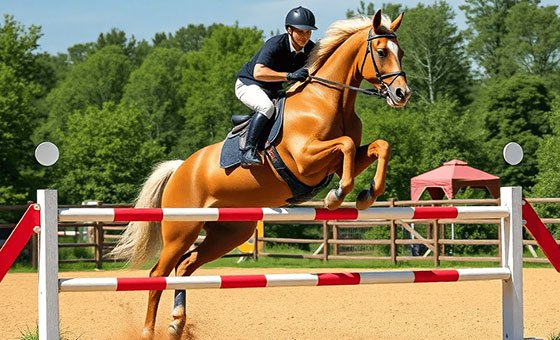
Competition Structure
Equestrian Jumping competitions can vary in format but generally include the following components:
- Jumping Classes: These are often categorized based on the skill level of the horse and rider. Competitions may focus exclusively on jumping, or they may be part of larger events that encompass other disciplines such as dressage and eventing.
- Governance: Various national organizations oversee jumping classes. In the USA, the United States Equestrian Federation (USEF) governs these events, while the British Showjumping Association oversees competitions in Great Britain. At the international level, competitions are regulated by the International Federation for Equestrian Sports (FEI).
Course Design
A jumping course typically includes a series of obstacles, which may consist of:
- Verticals: Simple fences that require the horse to jump over a single pole.
- Oxers: Wider jumps that consist of two verticals placed close together.
- Combination Jumps: A sequence of two or more jumps that require precise timing and technique.
- Water Jumps: Obstacles that include a body of water, adding an additional challenge.
Scoring and Judging
Riders are judged based on their ability to complete the course cleanly and efficiently. The key criteria for scoring include:
- Clear Rounds: Completing the course without knocking down any rails or refusing jumps.
- Time Penalties: Time taken to complete the course; faster times are often rewarded, but penalties can be incurred for faults.
Training at Olympic Dream India (ODI)
At Olympic Dream India, we are dedicated to nurturing talent in Equestrian Jumping. Our training programs focus on developing the necessary skills for both horse and rider, emphasizing technique, communication, and confidence in the arena. We aim to cultivate competitive riders who can excel at all levels of competition.
Image Gallery
Rules and Regulations
The intent is to jump cleanly over a set course within an allotted time.
……. …. ……
Injury & Medical Advice
Jumping is a very strenuous activity that places high physical demands on the horse.
Personality Development
Personality Development of Talent Search Program
……. …. …… ……. ……. …….. ……..

